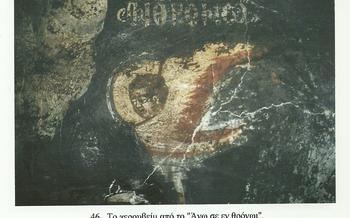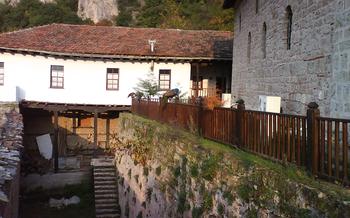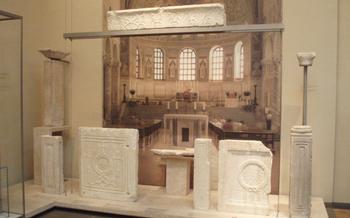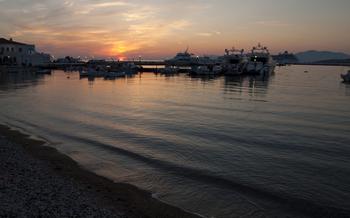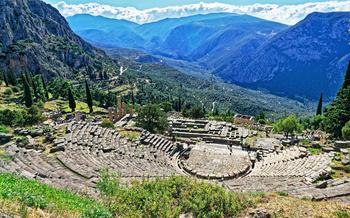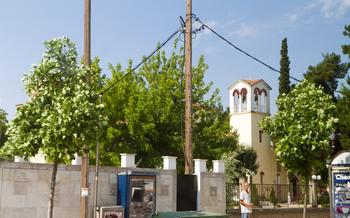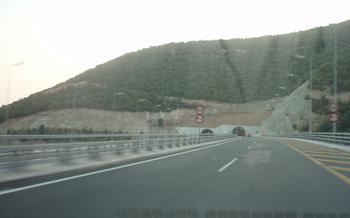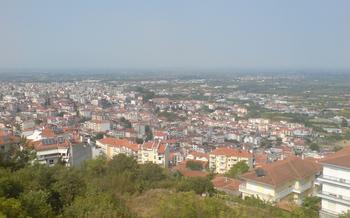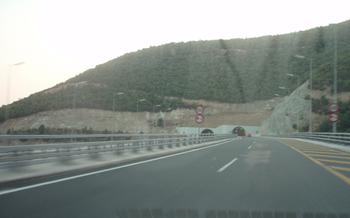
Old Metropolis and Saint Andrew Church
- The Old Metropolis: A Symbol of Architectural Grandeur
- The Allure of Byzantine Architecture
- Exploring the City's Ecclesiastical Heritage
- Immerse Yourself in Local Traditions
- The Art of Hagiography: A Visual Feast
- Unveiling the Secrets of the Churches
- The Role of Religion in Everyday Life
- A Spiritual Journey for All
- Preserving a Sacred Legacy
- Exploring the Surrounding Area
- Capture the Essence of Veria
- Beyond the Churches: Discovering Veria's Charm
- Practical Information for Your Visit
- Insider Tip: Unveiling a Hidden Gem
The Old Metropolis: A Symbol of Architectural Grandeur
Veria's Old Metropolis, a majestic edifice standing tall in the heart of the city, serves as a testament to the region's rich history and architectural prowess. Built in the 11th century, this Byzantine masterpiece is a fusion of sacred art and engineering, showcasing the transition from early Christian basilicas to the distinctive style of Byzantine architecture.
As you step into the Old Metropolis, you are greeted by an aura of tranquility and reverence. Its spacious interior, adorned with intricate frescoes and mosaics, transports you back in time to an era of faith and devotion. The church's central dome, supported by four massive pillars, creates a sense of awe and wonder, drawing your gaze upwards towards the heavens.
Among the must-see elements within the Old Metropolis are the stunning mosaic floor, depicting scenes from the Bible and the lives of saints, and the exquisitely carved wooden iconostasis, a masterpiece of craftsmanship that separates the sanctuary from the nave.
Practical information for visitors: The Old Metropolis is open to the public daily, with free admission. Remember to dress respectfully when visiting, covering your shoulders and knees. Guided tours are available upon request, providing insights into the church's history and significance.
The Allure of Byzantine Architecture
Byzantine architecture, a distinctive style that flourished in the Byzantine Empire from the 4th to the 15th century, left an indelible mark on Veria. Its churches, with their intricate mosaics, soaring domes, and graceful arches, are testaments to the empire's artistic and technical prowess.
Unique Characteristics of Byzantine Architecture
Byzantine architecture is characterized by its use of domes, which symbolize heaven and the divine. The domes are often decorated with intricate mosaics depicting biblical scenes and figures, creating a visually stunning and awe-inspiring effect. The interiors of Byzantine churches are typically adorned with frescoes, which tell stories from the Bible and the lives of saints, serving as a powerful educational and spiritual tool.
Examples of Byzantine Churches in Veria
Veria boasts several notable examples of Byzantine architecture. The most prominent is the Old Metropolis, a sprawling complex that includes the main church, a baptistery, and a bell tower. The church's interior is adorned with stunning frescoes that narrate stories from the Old and New Testaments.
Another significant Byzantine church in Veria is Saint Andrew's Church. Built in the 11th century, it features a remarkable dome and a series of well-preserved frescoes depicting scenes from the life of Christ. The church's interior is bathed in a warm and ethereal light, creating a serene and contemplative atmosphere.
Historical Context and Influence on the Region
The Byzantine Empire played a crucial role in shaping the cultural and religious identity of the region around Veria. The empire's emphasis on Christianity and its patronage of the arts led to the construction of numerous churches and monasteries throughout the region, which became centers of worship, learning, and community life.
Significance of Byzantine Heritage in Greece
The Byzantine heritage of Veria and Greece is a source of immense pride and cultural significance. The Byzantine churches in Veria stand as a testament to the empire's architectural achievements and its profound influence on the region's history and culture. They serve as a reminder of the rich tapestry of civilizations that have shaped Greece over the centuries.
Exploring the City's Ecclesiastical Heritage
Veria boasts a rich history of religious monuments that tell the story of its deep-rooted faith. Scattered throughout the city are numerous churches and monasteries, each with its own unique architectural style, fascinating history, and spiritual significance. From the grand Cathedral of Veria to the charming chapels hidden within historic neighborhoods, visitors are invited on a journey through time as they explore these sacred spaces.
The Church of the Panagia Gorgoepikoos, with its stunning 12th-century frescoes, offers a glimpse into the city's Byzantine past. The Monastery of Saint John the Baptist, perched on a hilltop overlooking the city, provides a serene retreat for reflection and contemplation. The Church of Saint Paraskevi, with its intricate wood carvings and vibrant iconography, showcases the artistic talents of local craftsmen.
These churches and monasteries are not just architectural wonders; they are living communities where faith is celebrated, traditions are preserved, and the spirit of Veria thrives. Visitors are welcome to attend religious services, witness festivals and celebrations, and interact with local believers to gain a deeper understanding of the role religion plays in everyday life.
To ensure a respectful and enriching experience, it is important to observe local customs and etiquette when visiting the churches. Dress modestly, cover your shoulders and knees, and maintain a quiet and reverent demeanor. Ask permission before taking photographs, and be mindful of ongoing religious ceremonies. By showing respect for the sacredness of these spaces, visitors can contribute to preserving and celebrating Veria's rich ecclesiastical heritage.
Immerse Yourself in Local Traditions
In Veria, the churches are not just architectural wonders; they are living, breathing centers of faith and tradition. Throughout the year, these sacred spaces come alive with festivals and celebrations that showcase the rich cultural heritage of the city. One of the most notable events is the annual feast day of the patron saint of each church. These celebrations often involve colorful processions, traditional music and dance, and communal feasts.
Participating in these festivities is a wonderful way to immerse yourself in the local culture and experience the deep connection between religion and everyday life in Veria. You'll have the opportunity to witness the vibrant traditions that have been passed down through generations, and to interact with the friendly locals who are always eager to share their faith and customs.
When visiting the churches during religious services or celebrations, it is important to be respectful and observe local customs. Dress modestly, avoid talking or taking photos during the service, and be mindful of the sacredness of the space. By showing respect and embracing the local traditions, you'll not only have a more meaningful experience but also contribute to preserving the cultural heritage of Veria.
The Art of Hagiography: A Visual Feast
Hagiography, the art of depicting the lives of saints and biblical scenes, holds a significant place in the Greek Orthodox tradition. Veria's churches are adorned with exquisite hagiographies, a testament to the skilled craftsmanship and deep devotion of the local artisans.
The frescoes and icons within these sacred spaces are not mere decorations; they serve as visual narratives, conveying stories of faith, sacrifice, and divine intervention. Each brushstroke, each intricate detail, speaks volumes about the lives and teachings of the saints, offering a glimpse into the rich tapestry of Christian history.
Whether it's the serene countenance of the Virgin Mary or the dynamic portrayal of a saint's miraculous deeds, the hagiographies in Veria's churches are a feast for the eyes. They captivate and inspire, inviting visitors to contemplate the deeper spiritual meanings behind the artwork.
One of the most notable examples of hagiography in Veria is the Church of the Holy Apostles, which features an awe-inspiring collection of frescoes depicting scenes from the lives of Christ and his apostles. The vivid colors, expressive figures, and intricate compositions create a breathtaking visual spectacle that transports visitors back in time.
Veria's churches are a treasure trove of hagiographical art, offering a unique opportunity to witness the skill and devotion of Byzantine and post-Byzantine artists. As you explore these sacred spaces, take the time to appreciate the beauty and symbolism of the hagiographies, allowing them to enrich your understanding of the region's rich religious heritage.
Unveiling the Secrets of the Churches
Beyond their architectural beauty and historical significance, the churches of Veria hold a wealth of hidden details and symbolism waiting to be discovered. Look closely at the intricate carvings and frescoes, and you'll find subtle references to biblical stories, saints' lives, and theological concepts. Each church has its own unique stories and legends associated with it, passed down through generations. Engage with local guides or delve into historical texts to uncover the deeper meanings behind the architecture and artwork. These churches are not mere buildings but repositories of wisdom, faith, and cultural heritage, inviting visitors to embark on a journey of discovery and enlightenment.
The Role of Religion in Everyday Life
Religion plays a pivotal role in Greek society, deeply shaping daily life and traditions. The Greek Orthodox Church is an integral part of the cultural fabric, with churches serving as community gathering places and spiritual sanctuaries. Participation in religious rituals, festivals, and ceremonies is common, and many Greeks find solace and guidance in their faith. Religious holidays, such as Easter and Christmas, are widely celebrated and hold immense cultural significance. Moreover, the influence of religion can be seen in various aspects of Greek life, from art and architecture to literature and music. Understanding the deep connection between religion and culture in Greece is essential for gaining a comprehensive understanding of the country and its people.
A Spiritual Journey for All
Veria's churches welcome visitors of all faiths, inviting them to embark on a spiritual journey of reflection and contemplation. Within these sacred spaces, one can find peace, solace, and inspiration. The churches offer a sanctuary for those seeking a deeper connection with their spirituality and a chance to explore the rich history and traditions of the Greek Orthodox faith.
For those who are not religious, the churches still offer a profound experience. The stunning architecture, intricate artwork, and serene atmosphere create a space for quiet contemplation and appreciation of the beauty and craftsmanship that went into their creation. Whether you come to pray, reflect, or simply admire the artistry, Veria's churches offer a spiritual experience that can touch the hearts and minds of all who visit.
Preserving a Sacred Legacy
The churches of Veria stand as testaments to the enduring power of faith and the artistry of past generations. However, the relentless passage of time and the ravages of nature have left their mark, necessitating ongoing efforts to conserve and restore these sacred structures.
Local authorities, in collaboration with the Greek Orthodox Church, play a crucial role in preserving this rich heritage. They meticulously document and assess the condition of each church, prioritizing those in urgent need of repairs. Skilled artisans and craftsmen, using traditional techniques, meticulously restore damaged frescoes, repair structural elements, and reinforce foundations.
Despite these efforts, funding remains a significant challenge. The sheer number of churches and the rising costs of materials and labor pose financial constraints. Donations from the faithful, as well as grants from cultural heritage organizations, provide vital support for these conservation initiatives.
Preserving these sacred spaces is not merely about maintaining physical structures; it is about safeguarding the cultural and spiritual essence of Veria. By protecting these architectural treasures, we honor the legacy of our ancestors and ensure that future generations can continue to experience the awe-inspiring beauty and spiritual significance of these sacred sites.
Visitors can contribute to these preservation efforts by respecting the churches and adhering to any guidelines or restrictions set forth by the authorities. By appreciating the historical and cultural value of these sacred spaces, we all play a role in ensuring their enduring legacy.
Exploring the Surrounding Area
Veria is surrounded by a wealth of historical and natural treasures that beckon visitors to explore beyond the city's churches. Just a short drive away, you'll find the renowned Vergina, home to the ancient Macedonian capital of Aigai and the magnificent tomb of King Philip II, father of Alexander the Great.
Venture further to discover the scenic Lake Vegoritida, a haven for nature enthusiasts with its crystal-clear waters, lush vegetation, and diverse birdlife. History buffs will delight in exploring the Byzantine monasteries perched on the lake's shores, each with its own unique story to tell.
For a taste of adventure, head to the Vermio Mountains, where you can embark on invigorating hikes through dense forests, past cascading waterfalls, and up to breathtaking viewpoints that offer panoramic vistas of the surrounding region. Whether you seek historical immersion, natural wonders, or outdoor thrills, Veria's surroundings offer a rich tapestry of experiences that will enrich your journey.
Capture the Essence of Veria
As you explore the churches of Veria, don't forget to capture the essence of this captivating city through your lens. The Old Metropolis and Saint Andrew Church, with their intricate facades, offer a wealth of photographic opportunities.
Golden Hour Magic: Plan your visit during the golden hours of dawn and dusk to capture the warm, diffused light that illuminates the churches' exteriors. These soft tones will enhance the architectural details and create a sense of ethereal beauty.
Experiment with Angles: Don't just stick to frontal shots. Experiment with different angles to reveal hidden perspectives. Try capturing the churches from a low angle to emphasize their grandeur or from a high vantage point to showcase their relationship with the surrounding cityscape.
Interior Details: While the exteriors are captivating, don't miss the opportunity to capture the intricate details within the churches. The frescoes, iconography, and stained glass windows are all worthy subjects for your lens.
Respectful Photography: Remember that these are sacred spaces where people come to worship and pray. Be respectful of the ongoing services and avoid using flash photography or making excessive noise.
Share Your Story: Share your stunning captures on social media using relevant hashtags to promote Veria's cultural heritage and inspire others to explore this hidden gem of Greece. Your photographs can serve as a testament to the beauty and significance of these sacred spaces.
Beyond the Churches: Discovering Veria's Charm
Veria offers an array of experiences that extend beyond its sacred sites. Immerse yourself in the city's vibrant culinary scene, where you can savor delicious traditional dishes and local delicacies. Take a leisurely stroll through the city's charming streets, lined with quaint shops and boutiques, where you can find unique souvenirs and handmade crafts.
Attend one of the many festivals and events that take place throughout the year, where you can witness traditional music and dance performances, sample local cuisine, and join in the lively celebrations. Veria is also home to several museums and galleries, where you can delve deeper into the city's rich history, culture, and art. Discover ancient artifacts, admire stunning works of art, and learn about the fascinating stories that have shaped this captivating city.
Most importantly, take the time to interact with the warm and hospitable locals, who are always eager to share their stories, traditions, and recommendations. Veria's charm lies not only in its historical and cultural treasures but also in the spirit of its people. Embrace the opportunity to connect with them and gain a deeper understanding of their way of life.
Practical Information for Your Visit
Planning your pilgrimage to Veria's sacred sites requires careful consideration. To make the most of your experience, choose the best time to visit based on your preferences. The city is at its most vibrant during the spring and fall, offering pleasant weather and fewer crowds. Summer can be hot and crowded, while winter brings its own charm with festive celebrations.
When visiting churches, it's essential to respect local customs and dress appropriately. Opt for modest clothing that covers your shoulders and knees. Shorts, tank tops, and revealing outfits are generally discouraged. For those with limited mobility, most churches provide wheelchair-accessible entrances and ramps.
Veria offers a range of accommodation options, from budget-friendly guesthouses to luxurious hotels. Booking in advance, especially during peak season, is recommended. The city is well-connected by public transportation, making it easy to get around. Taxis are also readily available.
Remember to be respectful and mindful of the sacred nature of these religious sites. Avoid loud noises, talking during services, and taking photographs without permission. Embrace the opportunity to immerse yourself in the local culture, interact with the friendly locals, and learn about their faith.
Insider Tip: Unveiling a Hidden Gem
Beyond the iconic churches of the Old Metropolis and Saint Andrew, Veria holds a treasure trove of lesser-known religious sites waiting to be discovered. One such gem is the secluded Chapel of Saint John the Theologian, nestled amidst a tranquil grove on the outskirts of the city.
Built in the 14th century, this charming chapel exudes an aura of serenity and spirituality. Its exterior is adorned with intricate stone carvings depicting biblical scenes, while the interior features beautifully preserved frescoes that narrate the life of Saint John.
Venture into the chapel and soak in the tranquility as you admire the vibrant colors and expressive brushstrokes of the frescoes. The serene atmosphere invites reflection and contemplation, allowing you to connect with the deeper spiritual essence of Veria.
This hidden gem is a testament to the rich religious heritage of the city and offers a unique opportunity to experience the sacred in a more intimate setting. Embrace the chance to discover this hidden treasure and share its beauty with fellow travelers who seek a deeper connection with Veria's spiritual side.
